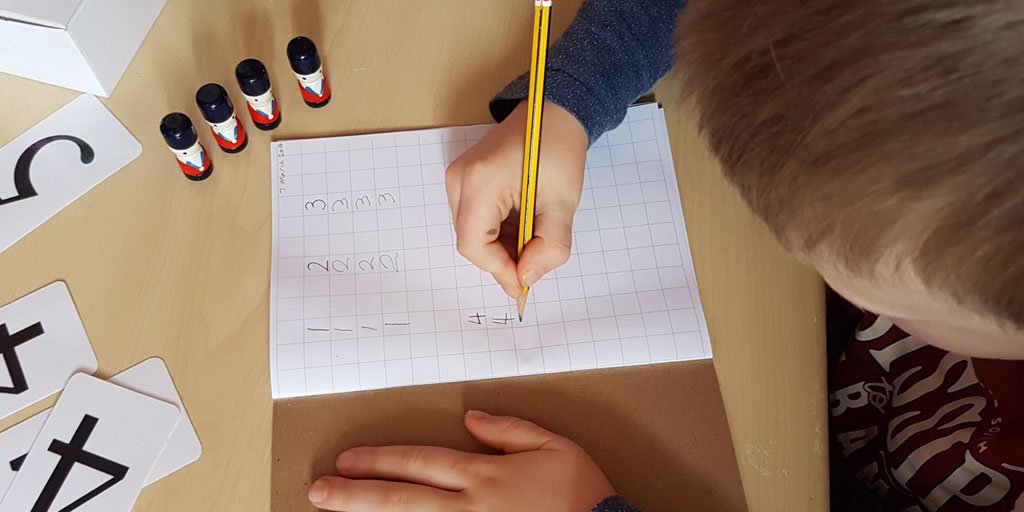60-day returns • free shipping on USA orders $129+
(We are pleased to present the following post by Richele Baburina, author of Mathematics: An Instrument for Living Teaching and its corresponding DVD set, Charlotte Mason’s Living Math: A Guided Journey.)
Charlotte Mason elementary arithmetic lessons are primarily oral. Rather than being worksheet driven—with a child working a page of exercises—the actual writing of numbers and equations is used very sparingly for young learners.
Let’s take a look at the first few lessons in elementary arithmetic and see how the reading and writing of digits are to be taught. In Charlotte’s schools, elementary arithmetic lessons were referred to as Numbers or Sums, referring to the child’s investigation of each number by working out addition and subtraction sums involving its use. For the first lesson, the number one is taken and the child is asked to point out one of something in the room, that is, anything that exists singly—one door, one nose, one pencil, etc.
Next, the symbol for one is learned. The child picks out the 1s from among a group of number cards, then, at last, she has the chance to learn to write the symbol 1. (Here you will notice a striking similarity between Charlotte’s initial lessons in Numbers and her first reading lessons.)
“The child should be taught from the first to regard the printed word as he already regards the spoken word, as the symbol of fact or idea full of interest” (Home Education, p. 216).
“Interest at once; he knows the thing…and the written symbol is pleasant in his eyes because it is associated with an existing idea in his mind” (Home Education, p. 218).
The initial writing of numbers would have been done on the child’s slate with chalk, but if you prefer a small dry-erase board, feel free to use that. Just as in Charlotte’s beginning handwriting lessons, neatness and accuracy are desired, with the child getting her written symbol for one as straight and perfect as she is able.
Numbers are first written out on the child’s slate and then a gridded notebook is introduced with each number occupying a square.
Just as you wouldn’t begin handwriting lessons with a college-ruled notebook, your young child should not be expected to write in tiny grid squares for math lessons. Give her a larger grid, perhaps 3/4-inch or 1/2-inch squares, that is more friendly to beginning handwriting. She can progress to a 1/4-inch grid later as her fine motor skills develop.
Next, the numbers two through nine are taken systematically in the same way, with little sums involving each number given orally. For example,
If you have 1 bean and I give you 2 more beans, how many have you?
Evan had 5 buttons but lost them all. How many buttons has Evan now?
The Dalton family has 4 boys and 3 girls. How many children all together?
As lessons progress, the child learns the symbols +, –, and =. Now she has all that is needed to write complete math equations, and this will be an added joy to her. But even at this point, lessons are primarily oral; handwriting is used sparingly so as not to overshadow the main thought of the lesson. During the final lesson on a particular number or on those days when a child’s work is going exceptionally well is that added joy of writing an equation in her math notebook afforded.
Can you imagine, rather than being bent over a worksheet for 20 minutes, the opportunity to write in a math notebook being considered a real joy by a child?
Charlotte knew that a child’s ability to write has no direct bearing on her ability to understand math concepts. In fact, especially for a young learner, handwriting can add an extra layer of effort and be a distraction to thinking mathematically.
Next time we will take a look at the hands-on objects that play a key role in the oral Simple Sums of a math lesson for a young learner.
Podcast: Play in new window | Download


Great post!! I am slowly making my way through the math DVD + book. It is very helpful.